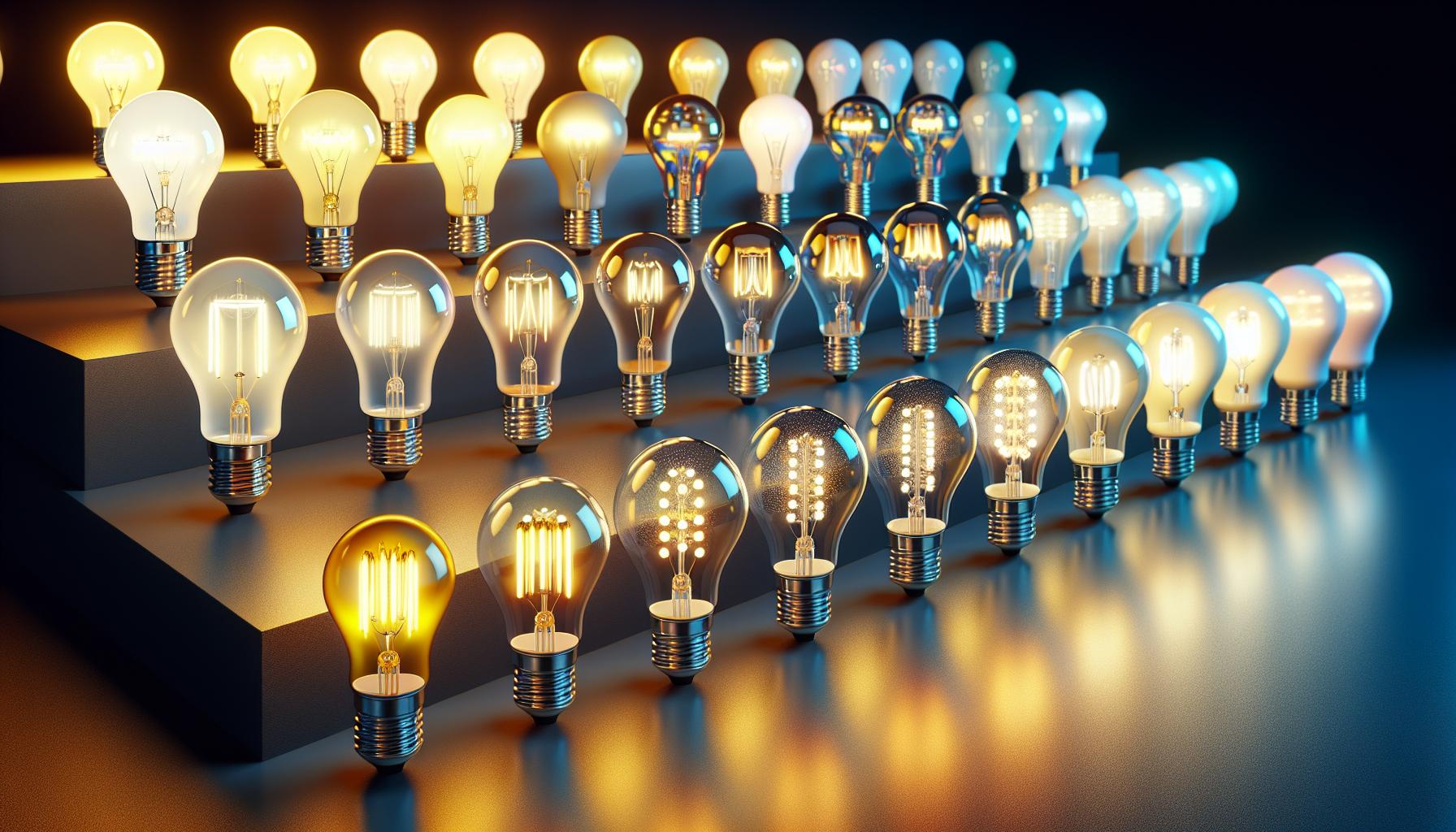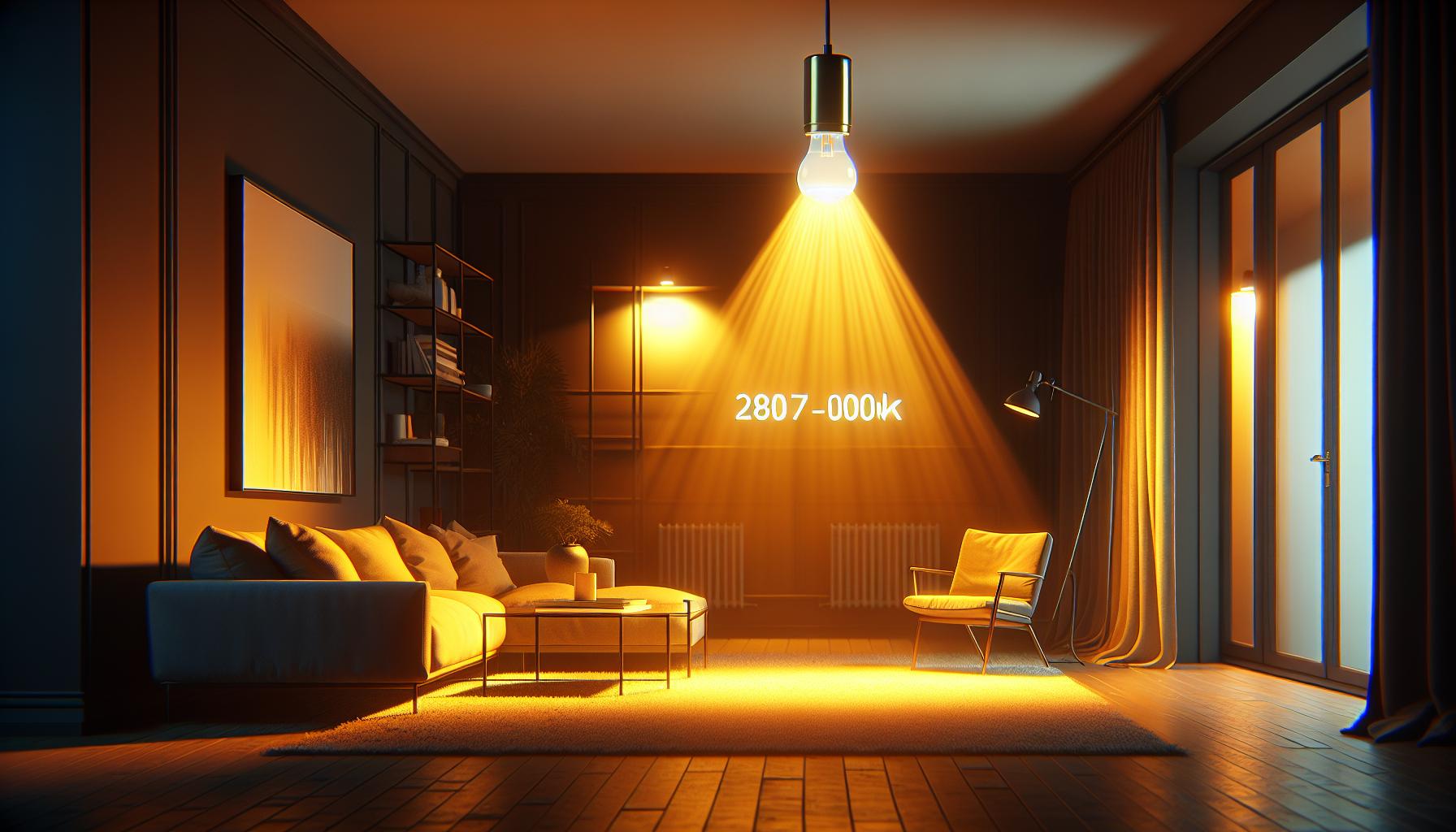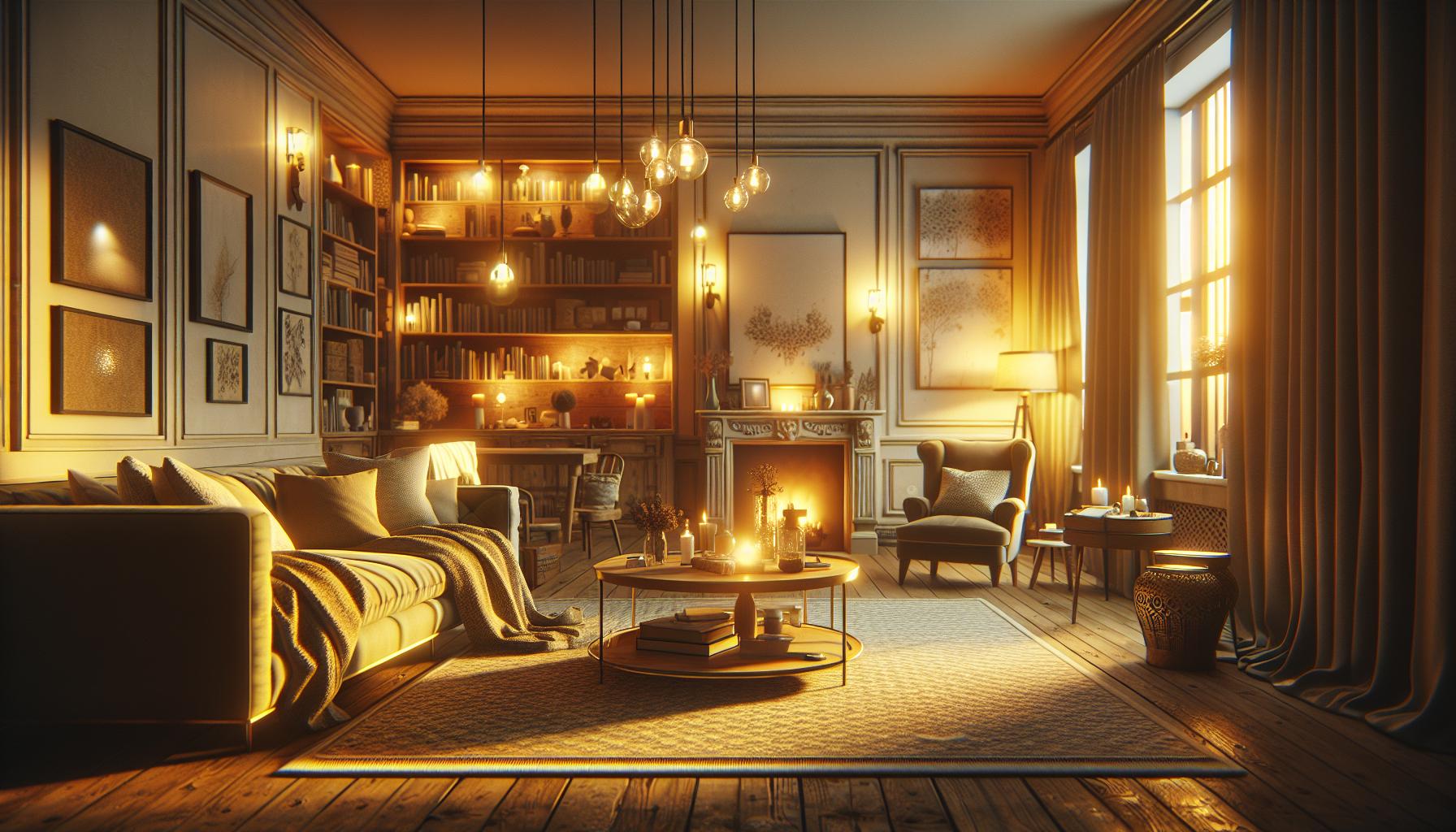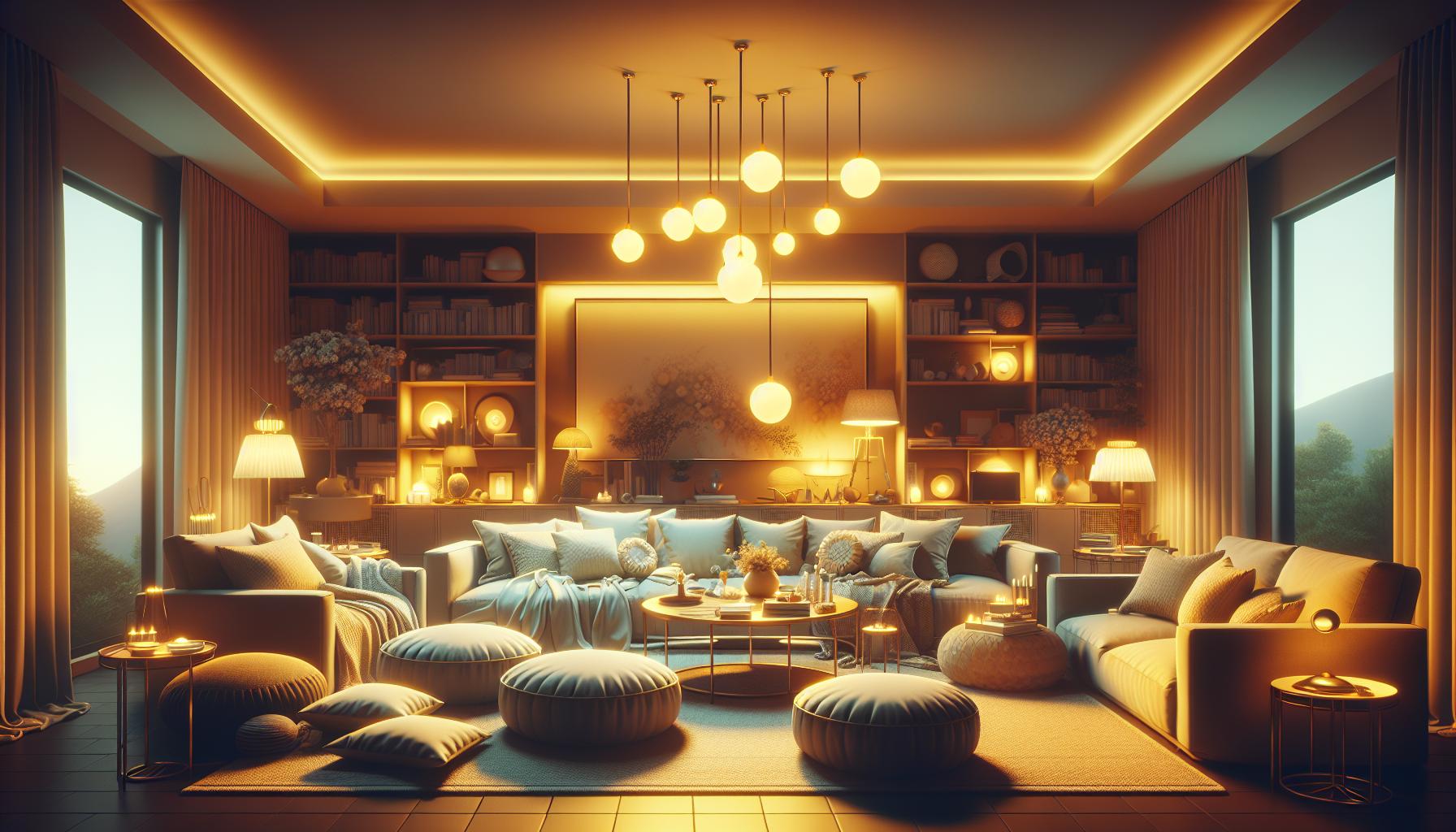Ever wandered down the lighting aisle and wondered why some bulbs cast a cozy, yellow glow while others mimic the midday sun? You’re not alone. The secret behind that warm hue is all in the color temperature, and it’s measured in Kelvin.
Choosing the right light bulb can transform the ambiance of your room from a clinical feeling to a warm and inviting space. It’s not just about wattage; the color temperature plays a huge role in setting the mood. Let’s dive into the world of light bulbs and find out why some give off that nostalgic yellow light.
What is color temperature?
When you’re on the hunt for the perfect light bulb to warm up your space, understanding color temperature is key. It’s like the secret ingredient that can transform the mood of any room. But what exactly is color temperature?
Think of color temperature as a way to describe the appearance of light. It refers to the hue and tone of light emitted from a bulb and is measured in units called Kelvin (K). This scale ranges from the warm, inviting glows of lower Kelvin numbers to the cooler, more invigorating lights found at higher Kelvin values.
Light bulbs with a lower Kelvin count emit a yellowish light, akin to the glow of a sunrise or sunset. This cozy lighting is perfect for spaces where you aim to relax or entertain. Low Kelvin bulbs typically range from 1,700K to 3,000K, ideal for creating that snug and welcoming atmosphere you crave.
On the other hand, bulbs with a higher Kelvin count – think above 4,600K – lean towards a blue-white light that mimics the midday sun. This type of light is great for concentration and areas where tasks are performed, like kitchens or office spaces.
Here’s a quick breakdown of color temperature ranges:
| Kelvin Range | Color Temperature | Ambient Use |
|---|---|---|
| 1,700K-3,000K | Warm White | Living rooms, bedrooms |
| 3,100K-4,500K | Cool White | Bathrooms, garages |
| 4,600K-6,500K | Daylight | Offices, display areas |
Remember, the Kelvin scale is your roadmap to customizing the vibe of each room with light. It’s not just about how bright you want your room to be, but also about how you want it to feel. By understanding this concept, you’ll hand-pick the light bulbs that’ll make your living spaces not just look, but feel just right. Whether you’re curled up with a book in a cozy, amber-lit nook or crafting in a well-lit workshop, the color temperature of your light bulbs sets the stage.
Understanding the Kelvin scale
When you’re searching for the perfect bulb to achieve that cozy, yellow glow, it’s crucial to understand the Kelvin scale, a crucial aspect of lighting that determines the color temperature of your light bulbs. The Kelvin (K) scale is a thermodynamic temperature scale starting from absolute zero, where all thermal motion ceases, but when it comes to light bulbs, it refers to the visual warmth or coolness of the light emitted.
Light bulbs with lower Kelvin numbers produce a warmer, yellowish light. Here’s a quick breakdown:
- Below 2000K: a dim glow, similar to what you’d see from a candle, perfect for creating an intimate and relaxing atmosphere.
- 2200K to 3000K: this range gives off a soft white light, often perceived as yellow. These bulbs are great for living rooms, dining areas, and anywhere you’d want to establish a warm, inviting vibe.
As an enthusiast for home DIY projects and a lover of lighting nuances, you’ll find that bulbs within the 2700K to 3000K range are ideal for those spaces where you want a touch of comfort without sacrificing too much brightness. They are a go-to for a reason; they mimic the golden tones of early morning or late afternoon sun, making them a staple in residential lighting.
On the clearer end, bulbs ranging from 3500K to 4100K begin to take on a more neutral white light, often considered as “cool” and clinical, ideal for workspaces and bathrooms where clarity and concentration are key.
It’s also beneficial to take note of the high Kelvin ratings. Bulbs that fall into the 5000K to 6500K range emit a bluish, daylight-like light. This kind of lighting can invigorate spaces such as home offices or garages where detail-oriented tasks are performed.
« How Are Light Bulbs Classified? The Ultimate Guide to Choosing the Right Bulb
Are Light Bulbs Harmful? Uncovering The Shocking Health and Environmental Impact »
Remember, the type of activities you do in each room should guide your choice of color temperature. With a grasp on the Kelvin scale, you’re well on your way to customizing each room to perfection with the right hue of light. Now, wouldn’t it be illuminating to test out different bulbs around your home to see how they can transform each space?
The relationship between color temperature and light appearance
Color temperature isn’t just a technical term you’d encounter when delving deep into the world of lighting; it’s the backbone of how your light bulbs determine the ambience of a space. Imagine you’re setting the mood for a cozy, intimate dinner or striving for crisp, clear lighting in your home office. The color temperature of your light bulbs is your unseen ally, shaping the aesthetic and functional quality of your environment.
When you’re out hunting for that perfect light bulb, understanding the correlation between color temperature and light appearance is like having a secret weapon. Light bulbs within the 2700K to 3000K range on the Kelvin scale exude a warm, inviting glow that often appears yellowish. This warmth is reminiscent of the sunset or the soft embrace of a candle’s flame—ideal for areas where you want to relax or socialize, such as:
- Living rooms
- Dining areas
- Bedrooms
As you move up the scale, say around 3500K to 4100K, the light begins to transition to a “cooler” appearance. These bulbs cast a bright, vibrant light with a neutral or whitish tinge. It’s the kind of clarity you’d want where tasks demand your attention and precision, like in:
- Kitchens
- Bathrooms
- Home offices
The higher you climb on the Kelvin scale, reaching upwards of 5000K to 6500K, the closer you get to daylight—with its bluish, energetic quality. This spectrum is less about warmth and coziness and more about mirroring the noonday sun’s invigorating effect. It’s no wonder that bulbs in this range are often the go-to for:
- Workshops
- Garages
- Studios
Remember, the numbers don’t lie. They’re your guide to creating atmospheres that range from mellow and soothing yellows to stimulating and focus-enhancing blues. And by aligning the color temperature with your intended use, you embrace lighting as an essential design element that does much more than simply illuminate – it transforms.
Yellow light bulbs: a lower color temperature
When you’re aiming to craft a cozy, warm, and welcoming environment, yellow light bulbs are your go-to choice. These bulbs fall into the lower end of the Kelvin scale—typically ranging from 1,000 to 3,000 K. At this spectrum, the light emitted resembles the warm, amber hue of a sunrise or sunset.
Yellow-toned lighting is synonymous with snug and tranquil spaces. That’s why you’ll often find these bulbs in areas meant for relaxation. Imagine curling up with a good book in your living room, the golden glow from your lamps enveloping you in comfort—this is the charm of yellow light bulbs. Here’s a quick breakdown of their Kelvin ratings:
| Kelvin Range | Light Appearance |
|---|---|
| 1,000 – 2,000 K | Very Warm/Soft Yellow |
| 2,000 – 3,000 K | Warm/Soft White |
Lighting with a lower color temperature isn’t just about setting the mood; it’s also about functionality. Your bedroom, for example, benefits from this softer lighting after dark, as it can signal your body that it’s time to wind down, aiding in your natural sleep cycle.
And let’s not overlook the aesthetic appeal of these bulbs. Fixtures with exposed filaments designed to mimic the look of vintage incandescent bulbs can give your space that sought-after old-school charm without sacrificing modern efficiency.
When choosing yellow light bulbs, you want to ensure compatibility with your existing fixtures and dimmers, especially if you’re aiming for that perfect ambiance. LED technology has advanced to the point where you can enjoy the yellow glow of low Kelvin lights while being energy-efficient and long-lasting. Remember, the key is in blending the benefits of modern-day lighting solutions with the warmth and invitation of traditional yellow tones.
How do yellow light bulbs create a cozy atmosphere?
Ever wondered why some rooms just feel more welcoming the moment you step in? A significant factor is the lighting, and yellow light bulbs are often the unsung heroes behind that warm embrace. Yellow light, emanating from bulbs at the lower end of the Kelvin scale, typically around 2700K to 3000K, envelops a room in a glow that mirrors the golden hues of sunrise and sunset.
As you delve into the world of DIY home decor, you’ll find that these bulbs are key in creating a cozy atmosphere. Unlike their bluer counterparts that promote alertness, yellow light bulbs excel in creating a relaxed environment. It’s all in the light appearance; yellow tones offer a soft light that discourages strain on the eyes, making them perfect for unwinding after a long day.
Picture your living room or bedroom lit in such a way that it feels like a snug cocoon—a place for conversation, reading, or a warm cup of tea. Here’s how yellow light achieves this comforting effect:
- Soft Shadows: Yellow light casts gentle shadows, reducing harsh contrasts and creating a calming space.
- Harmony with Decor: The warmth of the light complements wood finishes and rich fabrics often found in cozy settings.
- Mood Enhancement: The warmth of yellow light can induce relaxation and happiness, much like the natural light at dawn and dusk.
In lighting design, it’s not just about the color but also the placement and intensity. Strategically positioned lamps with yellow bulbs can accentuate the corners of a room, making it appear smaller and more intimate. Additionally, these bulbs are compatible with dimmer switches, letting you adjust the ambiance to match your mood perfectly.
Think of the yellow light from these bulbs as the glow of a fireplace. It carries an inherent soothing quality that subconsciously signals your mind and body to relax and feel at ease. As you tackle your next home improvement project, consider the powerful role yellow light bulbs can play in transforming your space into a peaceful haven.
Other factors that can affect the color of light bulbs
When you’re on the hunt for that perfect yellow glow, keep in mind that color temperature isn’t the sole factor that determines the color output of your light bulbs. Several other variables play a pivotal role in the hue and ambiance they create in your space.
Material and Coating of the Bulb:
The materials used in manufacturing the bulb can influence the light’s color. For instance, bulbs with a phosphor coating on the inside tend to soften light, giving off a warmer, more yellow appearance. LED bulbs combine various phosphors to achieve a desired color temperature, with some specifically designed to mimic the warm, yellowish light of incandescents.
Shade and Fixture Color:
Your room’s aesthetic elements also contribute to the perceived color of your bulbs. A lampshade’s color can alter the appearance of the light. Natural and warm-colored shades tend to filter light into softer, yellower tones, enhancing the coziness of a room.
Dimming Functionality:
If your bulbs are dimmable and you’ve got them on a lower setting, you’ll notice them emitting a yellower light compared to when they’re at full brightness. This is due to dimming which often changes the color temperature, making the light appear warmer.
Wall and Decor Colors:
Don’t overlook the impact of your room’s color scheme. Light interacting with colored walls or decor can change its perceived color temperature. Light-colored and reflective surfaces will keep the light truer to its original color while darker colors can absorb light, thereby diminishing its intensity and altering its appearance.
By considering these factors, you can fine-tune the ambiance of each room to fit your mood or the desired effect. It’s the subtleties like these that can take your home DIY projects to the next level, infusing personality and warmth into your living spaces. Embrace the interplay of light, material, and shade, and you’ll find just the right balance for every corner of your home.
Conclusion
You’ve now got the scoop on why some light bulbs cast a cozy yellow glow. It’s not just about the bulb’s color temperature but also the interplay of factors like the bulb’s design and your room’s decor. Armed with this knowledge, you’re ready to set the perfect mood in your space. Go ahead, experiment with different bulbs and watch your rooms come to life with just the right touch of yellow warmth. Remember, it’s all about creating an atmosphere that feels just right for you. Happy lighting!
Frequently Asked Questions
What is color temperature in light bulbs?
Color temperature refers to the appearance of the light emitted by a bulb, ranging from warm (yellowish) to cool (bluish) light, measured on the Kelvin scale.
How does color temperature affect a room’s ambiance?
The color temperature of a light bulb can significantly change the mood of a room. Warm light creates a cozy and relaxing atmosphere, while cool light is energizing and better for concentration.
What is the Kelvin scale?
The Kelvin scale measures the color temperature of light sources, represented in degrees Kelvin (K). It identifies how warm or cool the light from a bulb will appear.
Which Kelvin range is ideal for living rooms?
Warm lights with Kelvin ranges between 2,700K and 3,000K are ideal for living rooms as they provide a relaxing and welcoming ambiance.
Can other factors influence the color output of light bulbs?
Yes, besides color temperature, the material and coating of the bulb, the color of shades and fixtures, dimming features, and the colors of walls and decor can all influence the perceived color of light in a room.
How can you customize the vibe of a room using light bulbs?
By selecting light bulbs with the appropriate color temperature and considering factors such as bulb coatings, fixture colors, and room decor, you can customize the vibe of a room to match your desired mood or effect.





